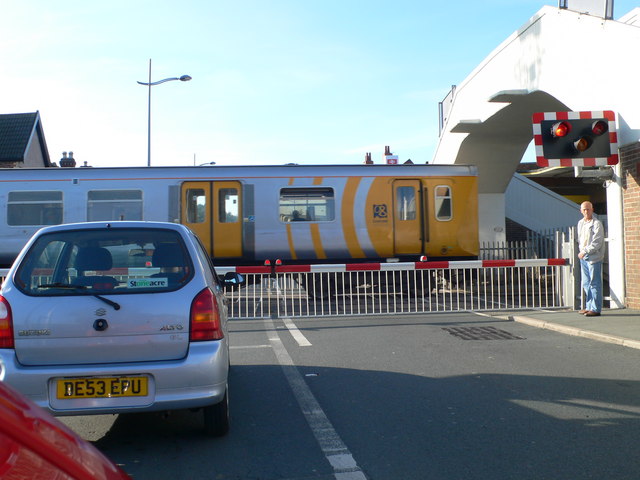Lidar at high-traffic railway level crossings
- September 27, 2021
- William Payne

Silicon Valley lidar developer Cepton has developed with Lithuania-based system integrator Belam, lidar-enabled obstacle detection for railway level crossings. The two companies have completed an installation at one of Europe’s busiest railway crossings, where the lidar-based system has already monitored over 15,000 trains.
The Cepton and Belam developed automated system has minimised unnecessary stops on the intersection, resulting in traffic flow at the junction becoming more efficient, as well as safer.
Railway level crossings must deal with a variety of road users such as pedestrians, cyclists, cars and trucks, and the potential risk of collisions with trains. The high speed of passing trains can put road users at risk, requiring accurate real-time monitoring of the traffic at the crossings, even in difficult weather conditions, to make sure that the tracks are free of obstacles when the train is about to approach. Existing sensor technologies find this challenging, such as camera and radar. Radars lack the resolution needed to accurately verify, locate and classify the obstacle. Cameras provide 2D imaging without readily-available information about object size, location and speed, and are susceptible to difficult lighting and weather conditions.
Belam tested a few types of sensors, including lidars and microwave radars through their development process. During an extended testing process, Belam concluded that, compared to the other sensors tested, lidars provided the most reliable results in terms of eliminating false positives and false negatives. As lidars perform well at night and in various environmental conditions, the Vista-P90 lidars deployed as part of the Helius system outperformed other technologies tested in generating high-resolution 3D imaging of vehicles, people and other objects.
Belam’s system has achieved an accuracy of over 99.9% in obstacle detection. This level of accuracy has enabled the level crossing to achieve a higher safety rating, where passing trains are now allowed to pass at almost twice the speed as they used to. Following implementation of the automated system, stop signs, which were previously installed at this intersection to mandate a full stop for all vehicles before crossing, were removed. This has improved the traffic flow at the crossing and increased the operational efficiency of the train service.
Powered by Cepton’s MMT (Micro Motion Technology), the Vista-P90 lidar offers a wide field of view coverage (90° horizontal x 40° vertical), along with high resolution and long range at an affordable price point. The sensor is rotation-free, frictionless and mirrorless, making it rugged and capable of continuous, outdoor applications, even in harsh weather conditions. With multi-lidar aggregation, edge computing and a low-bandwidth data output, the Helius smart lidar system is easy to integrate, scale up and maintain.
“Our partnership with Cepton has helped us demonstrate the tremendous potential of lidar technology in smart transportation infrastructure,” said Aleksandras Zidokas, Business Director at Belam. “In addition to making railway intersections safer for road users, our lidar-enabled system also brought about marked improvement in the traffic flow. We look forward to deploying Cepton’s solutions at more locations, as a scaled up network of smart lidars could ultimately enable safer and more efficient transit systems, which will ultimately result in reduced carbon emissions and a greener city.”
Dr Jun Pei, CEO of Cepton said: “Lidar enables a higher level of safety for everyone on the road, not just drivers, and we built our lidar solutions to achieve that goal. Our partnership with Belam enables the next-generation of rail and road safety applications and extends the capabilities of our high performance lidars and perception solutions into the rail market. We look forward to a deeper collaboration with Belam to make safer rail traffic a reality.”




